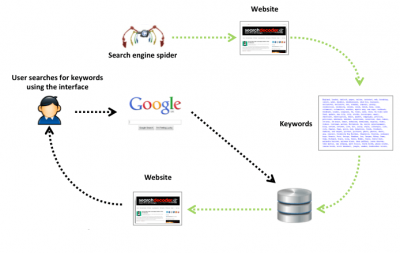
Each time you enter a word or phrase (say, “the five best desserts”) into a search engine, the following things happen behind the scenes in about one-eighth of a second:
Step 1 Search: The search engine uses algorithms (mathematical formulas) to determine exactly what you’re hunting for, adding in synonyms (“tastiest treats”), anticipating your terms before you’ve even finished typing, and offering corrections in case you’ve made a mistake (did you mean “best deserts” instead of “best deserts”?).
Step 2 Sort: Your request is sent to the search engine’s servers. Here, the company that owns the search engine maintains a massive index of all the words, photos, videos, songs, and other data strewn across the World Wide Web. This information – enough to fill hundreds of millions of gigabytes – is continuously collected and updated by programs called “spiders” that crawl across the Web and sift through its information.
Step 3 Collect: From its index, the search engine gathers every Web page with content that matches your search term. Results are filtered based on hundreds of factors, including the pages’ age, the number of people who’ve visited the pages, their estimated reliability, and more.
Step 4 Voila! : The results are ranked as links in your Web browser, with the most relevant Web pages at the top of the list.
Picture Credit : Google
